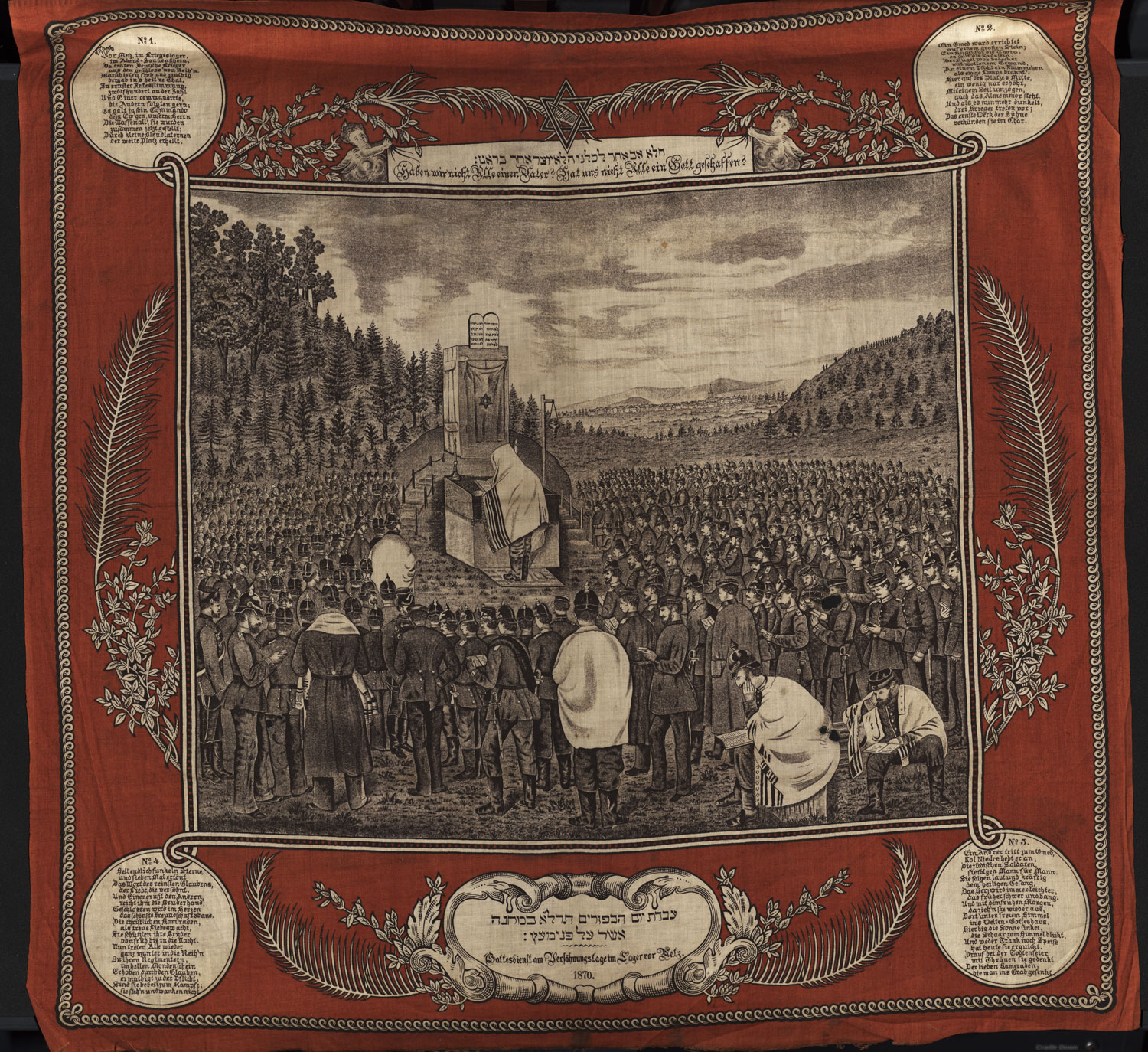This textile, recently attributed to Hermann Junker (1838–1899), depicts a scene that apparently never took place, but which German Jews embraced as truth. It shows Jewish soldiers in full military uniform and prayer shawls gathered in a valley outside the besieged city of Metz during the Franco-Prussian War (1870–1871). The soldiers face a small mound upon which stands a wooden ark, in front of which a cantor leads the Yom Kippur service. On a hill overlooking the service, Christian soldiers guard their Jewish peers from attack. This portrayal of Jewish soldiers enjoying freedom of religious expression and overt support from their Christian cohort was widely reproduced to support feelings of patriotism among German Jews. The German text incorporated into the border explicitly promotes this feeling of unity and comradery. Furthermore, the involvement of their non-Jewish compatriots makes clear that this service was sanctioned by the military. The text describes the Jewish soldiers feeling emboldened, unwavering, and ready for battle after the conclusion of the service.
The poem’s portrayal of empowerment of the Jewish soldiers and their strengthened sense of duty directly connects service to their country with several things the Jewish community desired—religious tolerance, equality, and unity with their Christian neighbors. The links between the Jews’ patriotic role and their empowerment suggests that the textile might have been produced in a deliberate effort to inspire patriotism. That this image was widely reproduced and accepted, despite firsthand accounts of its inaccuracy, is evidence of how successful and powerful it was in both depicting and inspiring patriotism among Jewish Germans.
